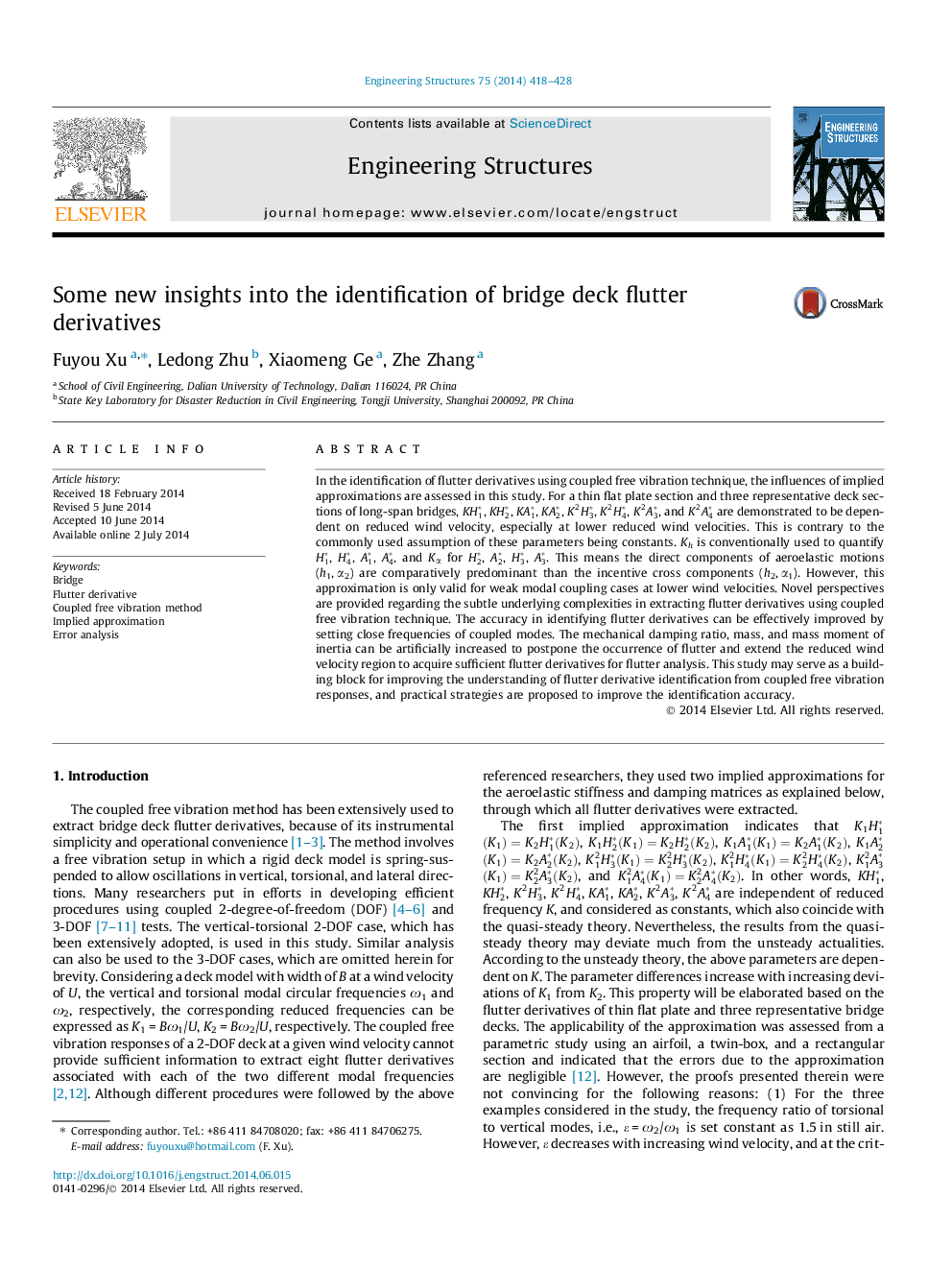| Article ID | Journal | Published Year | Pages | File Type |
|---|---|---|---|---|
| 266652 | Engineering Structures | 2014 | 11 Pages |
•The assumptions to extract flutter derivative by coupled free vibration are studied.•Novel perspectives and practical techniques are offered for improving accuracy.•The conditions for the predominant aeroelastic components are summarized.•The reasons for nonlinear behaviors of flutter derivatives are highlighted.•Four typical deck sections are used to verify the newly proposed viewpoints.
In the identification of flutter derivatives using coupled free vibration technique, the influences of implied approximations are assessed in this study. For a thin flat plate section and three representative deck sections of long-span bridges, KH1∗, KH2∗, KA1∗, KA2∗, K2H3∗, K2H4∗, K2A3∗, and K2A4∗ are demonstrated to be dependent on reduced wind velocity, especially at lower reduced wind velocities. This is contrary to the commonly used assumption of these parameters being constants. Kh is conventionally used to quantify H1∗, H4∗, A1∗, A4∗, and Kα for H2∗, A2∗, H3∗, A3∗. This means the direct components of aeroelastic motions (h1, α2) are comparatively predominant than the incentive cross components (h2, α1). However, this approximation is only valid for weak modal coupling cases at lower wind velocities. Novel perspectives are provided regarding the subtle underlying complexities in extracting flutter derivatives using coupled free vibration technique. The accuracy in identifying flutter derivatives can be effectively improved by setting close frequencies of coupled modes. The mechanical damping ratio, mass, and mass moment of inertia can be artificially increased to postpone the occurrence of flutter and extend the reduced wind velocity region to acquire sufficient flutter derivatives for flutter analysis. This study may serve as a building block for improving the understanding of flutter derivative identification from coupled free vibration responses, and practical strategies are proposed to improve the identification accuracy.
